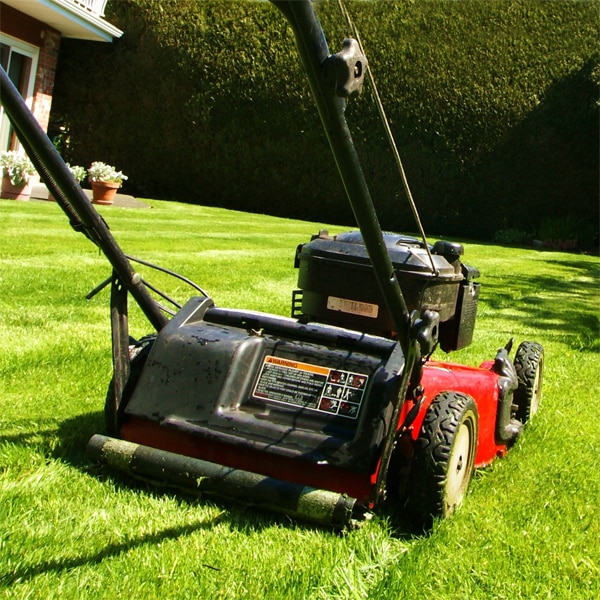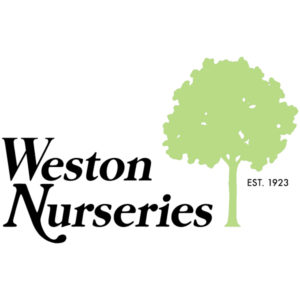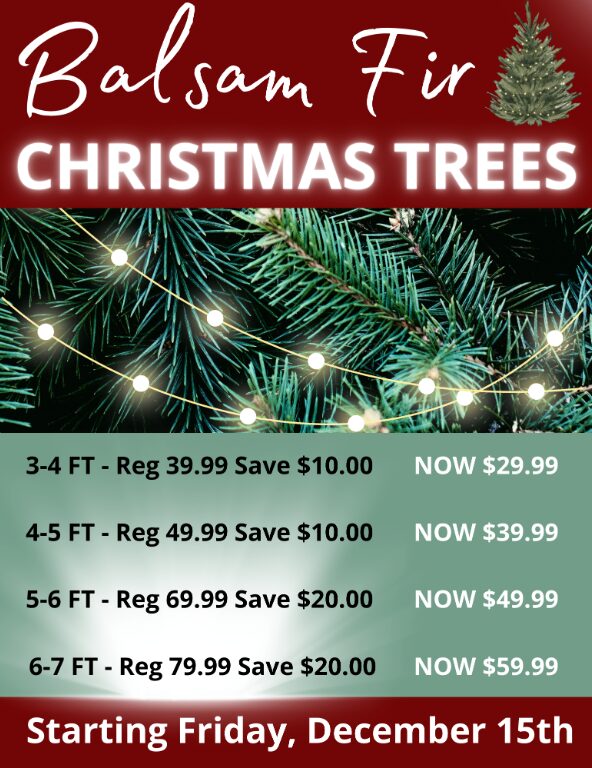You can also view our Lawn Maintenance Guideline for more information.
MARCH
Sharpen mower Cleanly cut grass is less susceptible to disease.
Lime Pelletized lime is the easiest to use. Do not lime if ground is soggy.
• Now. (If test shows soil pH is <5.5, repeat in fall.)
OR
• Wait until November.
APRIL
Clean up winter debris once the ground firms up.
Start a new lawn Use a starter fertilizer. If you need to prevent crabgrass from seeding along with the grass, use an appropriate pre-emergent (Tupersan).
• Now through May.
OR
• Wait until September.
Mow weekly, 2½-3” high. Don’t cut off more than 1/3 of the blade at any one mowing. Leave clippings (a good nitrogen source) if no disease is present and they won’t smother the grass.
Fertilize
• Use a maintenance (complete) fertilizer.
OR
• Use a Step 1 product (typically 22-4-4), before forsythia blooms drop, with a pre-emergent weed control if you need to control crabgrass and other annual weeds (seeds germinate as soon as the soil becomes warm enough).
TROUBLESHOOTING
• Check for snow mold damage. Use a lawn fungicide if necessary.
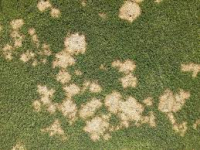
MAY
Start a new lawn
• Now.
OR
• Wait until September.
Topdress as needed.
Aerate Core aeration is better than tine aeration. Aerate before applying a pre-emergent control.
• Now.
OR
• Wait until October.
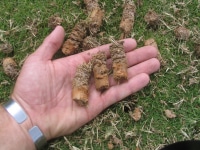
Dethatch if more than ½” of thatch.
• Now.
OR
• Wait until early October.
Water 1 inch+ per week, including rainfall. Best time is from 4 a.m. to 5 a.m. which allows blades to dry, minimizing disease potential. Watering once a week for a longer period is better than more frequently for short periods, enhancing drought tolerance by encouraging deeper roots.
Fertilize
• Use a maintenance (complete) fertilizer.
OR
• Use a Step 2 product (typically 26-3-6) in late May or by June 15 if broadleaf weeds are a problem.
TROUBLESHOOTING
• Control overwintering grubs that resurface as the soil warms, now through June if you had a significant problem the prior season or if grub activity is seen (if you find more than 5-7 grubs beneath a square foot of turf). Use a 24 hour product /Dylox.
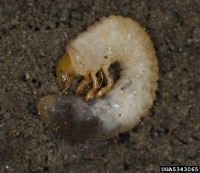
• Control broadleaf weeds. A liquid broadleaf herbicide is most effective.
JUNE
Raise mower height to at least 3” in late June.
Fertilize
• Use a low-nitrogen product (typically organic slow-release) after June 15. Avoid high nitrogen fertilizers when high temperatures coincide with low moisture, especially if you don’t irrigate regularly.
OR
• Wait until September to fertilize.
OR
• Use a Step 2 product before June 15 if broadleaf weeds are a problem and if you didn’t in late May.
TROUBLESHOOTING
• Watch for disease. Cool wet periods promote fungus — leaf spot, red thread. Brown patch disease (Rhizoctonia fungus) peaks.
• Control grubs now (with imidacloprid/Merit/season-long product) if you had a significant problem the prior season and if you didn’t use grub control in May.
• Control sod webworm.
• Control broadleaf weeds with a 2nd application of a liquid spot treatment product, 4 to 6 weeks after the first, if additional control is needed.
JULY
Important note: Un-irrigated lawns may go dormant with high temperatures. This is normal; grass will green up with the return of cooler weather. Do not fertilize dormant turf (no severe heat or drought stress).
Fertilize
• Use a low nitrogen fertilizer if weather permits (no severe heat or drought stress) or with irrigation.
OR
• Wait until September to fertilize.
OR
• Use a Step 3 product (typically 18-2-3) if you irrigate regularly and need to control surface feeding insects.
TROUBLESHOOTING
• Control chinch bug and other surface feeders. Heat and stress damage is made worse by chinch bug. You can use a separate insecticide if you don’t irrigate regularly or, if you do irrigate regularly, you can use a Step 3 product (typically 18-2-3) that contains insect control.
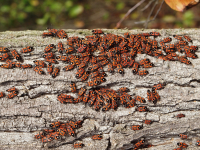
• Watch for pythium blight on ryegrasses when high overnight temperatures combine with high humidity.
AUGUST
Important note: Un-irrigated lawns may go dormant with high temperatures. This is normal; grass will green up with the return of cooler weather. Do not fertilize dormant turf (no severe heat or drought stress).
TROUBLESHOOTING
• Control this season’s new generation of grubs (if you find more than 5-7 grubs beneath a square foot of turf). Use Dylox or imidacloprid in mid to late August for chemical control, or wait until September to use beneficial nematodes. If this treatment is successful, you’ll have a free pass until next August when you should check again.
• Keep checking for chinch bugs and treat if necessary. Heat and stress damage may be made worse by chinch bug.
• Rust disease is active at daytime temperatures over 90 degrees combined with warm nights.
SEPTEMBER
New lawn or overseeding – the best time. Ideally seeding work is completed by October 15. Can be combined with aeration or dethatching as preparation.
Top dressing can be combined with overseeding or seeding.
Aerate now to early November if you didn’t do so in spring. Core aeration is better than tine aeration.
Fertilize September is the optimal time to fertilize a lawn.
• Use a high nitrogen maintenance fertilizer (typically a green-up product).
OR
• Wait until October to apply a high nitrogen fertilizer if you applied a Step 3 product earlier in the summer.
TROUBLESHOOTING
• Keep checking for grubs. Treat if necessary (if you find more than 5-7 grubs in a square foot of turf). Best time for non-chemical control with beneficial nematodes; soil must be kept moist.
• Keep checking for broadleaf and perennial weeds. Use a liquid spot treatment September/October, but not if you’re overseeding or seeding.
• Annual weeds may germinate again from seed. Use a pre-emergent or, if actively growing, with a liquid spot treatment. Annual bluegrass (Poa trivialis) pre-emergent applied now. Don’t use a pre-emergent weed control if you’re overseeding or seeding.
OCTOBER
Dethatch if more than ½” of thatch, early October.
Aerate Core aeration is better than tine aeration. Aerate before applying a pre-emergent control.
Clean up fall debris All leaf cover has to be removed before heavy fall rains/snow.
Lower mower height to 2½ – 3”.
Fertilize
• Use a high nitrogen maintenance fertilizer (typically a green-up product) if you didn’t in September.
OR
• Use a Step 4 winterizer product (typically 10-18-20) in late October or early November, but no sooner than 4-6 weeks after any prior fall application.
TROUBLESHOOTING
• Keep checking for broadleaf and perennial weeds. Use a liquid spot treatment September/October, but not if you’re overseeding or seeding.
NOVEMBER
Aerate – September to early November, if you didn’t do so in the spring.
Lime – any time before the ground freezes. Pelletized is easiest to use.
Fertilize Use a Step 4 winterizer product if you didn’t in October, but no sooner than 4-6 weeks after any prior fall application and no later than Veteran’s Day.
GLOSSARY
Aeration – perforates compacted soil, aids root growth, allows water and nutrients to penetrate better, increases gas exchange. Core aerators remove plugs of soil that can be left to dry on the lawn surface and then raked into the turf. Tine aerators force tines into the ground to create holes but in so doing further compact the soil around the holes. Because of this compaction, we recommend you use a core aerator.
Broadleaf Weed Controls – Available as many liquid spot treatment products and as a component of Step 2 combination products. There is little sense in treating the entire lawn with a Step 2 product if you have only a few broadleaf weeds, AND liquid products are faster acting and more effective!
Crabgrass – An annual that dies every fall but leaves a huge legacy of seed ready to germinate the next spring. Use a pre-emergent product and, if further control is necessary, a liquid spot treatment later in the season. Pre-emergent control is always preferred and much less stressful to turf.
Fertilizer – Fertilizers are described by three numbers that indicate how much of the 3 macronutrients they contain: nitrogen (N) – phosphorous (P) – potash (K). Depending on their chemisty, these elements can be highly soluble for quick release or slowly soluble for slow-release. Some basic types of fertilizer: green-up (typically a high nitrogen product from a quick release source with no added controls), maintenance (typically a well balanced product with no added controls), slow-release (requires microorganisms in the soil to break it down and make nutrients available to plants), organic (e.g., typically slow release granular, milorganite, chickity doo doo), synthetic organics (with a slow-release nitrogen component), step programs (typically green-up, maintenance and winterizer fertilizers that also include weed or insect controls).
Fungal diseases – (for example, snow mold, pythium blight, leaf spot, brown patch, take all patch, red thread, rust) can from time to time become a problem. Identification of the specific disease is key to effective treatment. There is a wealth of information on-line to help with identification (see the link below). Once you’ve identified the problem you can use any fungicide product that lists that problem on its label. There are granular products suitable for large areas and liquid products for both large areas and spot treatment. Preventative applications should be made on lawns with disease history when conditions are prime for disease outbreak. Do not leave diseased clippings on the lawn.
Insect pests, grubs and root-feeding – Insect pests come in two basic categories, root feeders and surface feeders. The primary root-feeding pests in our area are the immature stages of Japanese, Asian Garden, and Chafer beetles, better known as white grubs. Adult beetles lay eggs in summer. Eggs hatch into relatively small grubs that feed until soil temperatures drop in fall. The grubs go deeper in the soil to overwinter and resurface the next spring (when soil temperatures rise once again) as much larger grubs. If you find more than 5-7 grubs in a square foot of turf you should treat the lawn. If you do not find grubs or find only a few there is little point in using a chemical product. There are two basic types of chemical control, 24-hour insecticides (typically Dylox) and season-long insecticides (typically imidacloprid). The 24-hour products are effective on both large and small grubs. Season-long controls are more effective on small grubs. Grub control is typically available as a granular product. Organic controls are available such as milky spore and beneficial nematodes. We recommend you research the specific application requirements of these options.
Insect pests, surface feeding – Insect pests come in two basic categories, root feeders and surface feeders. In our area the primary surface feeders are sod webworm and chinch bug. Do not treat if there is no sign of insect damage; needless use of chemicals promotes resistance. Insecticides for surface feeders are available in granular and liquid form as well as a component of Step 3 fertilizers. Identification of the specific insect is key to effective treatment. There is a wealth of information on line to help with identification (see the link below). Once you’ve identified the insect you can use any insecticide that lists that insect on its label. There are granular products suitable for large areas and liquid products for both large areas and spot treatment.
Lime – provides calcium carbonate that, although it is not a fertilizer, is crucial to plant growth and helps plants to use other important soil nutrients. Lime raises pH. Lawn grasses prefer a higher pH than most local soils provide. There are two basic types of lime: calcium carbonate and dolomitic (which provides magnesium with other trace elements in addition to calcium). Lime comes in several forms: pelletized, granular, powdered, hydrated (caustic – use on bare soil only), or liquid. Pelletized limes are the easiest to use, are the least likely to burn, and can be applied with any spreader.
Overseeding – Bagged grass seeds usually list on the label an overseeding rate that tells you how many pounds of seed you should use per square footage of area. If no overseeding rate is given, apply at half of the regular seeding rate. You should use a blend that matches the growing conditions in your yard and is compatible with the existing turf. Use a slice seeder for best results.
Pre-emergent weed control – Chemical pre-emergents inhibit germination of all seeds and are usually combined with Step 1 fertilizers. The most common target is crabgrass. To prevent germination of weed seeds but allow germination of grass seed, use only Tupersan or a comparable product. Corn gluten is an organic pre-emergent that relies primarily on promoting lush growth which crowds out weeds. All pre-emergents must remain undisturbed after application to be effective.
Seeding – All bagged grass seeds list on the label a seeding rate that tells you how many pounds of seed you should use per square footage of area. Grass seed mixes vary according to sun and wear requirements. You must use a mix that matches the growing conditions in your yard.
Thatch – is a layer of decomposing grass stems, roots, and debris that builds up above the soil surface. Normally microorganisms breakdown and maintain thatch at beneficial levels. A build-up of more than ½”, however, should be removed. You can measure how much thatch you have by removing and inspecting a 2” plug of lawn. Use a dethatching machine, a thatching rake, or a vertical cutter. Go over the whole lawn once; rake up the debris. Repeat at right angles; rake up the debris. You should not need to dethatch every year.
Top dressing – refers to applications of compost, sand or topsoil over the lawn surface, no more than 1” deep, to promote soil fertility or drainage. Annual topdressing with ½-1” of good quality compost can make fertilizing unnecessary.
Vertical mower/Verticutter/Dethatcher – Unlike a normal mower, this machine cuts in the vertical plane and mechanically removes thatch.


